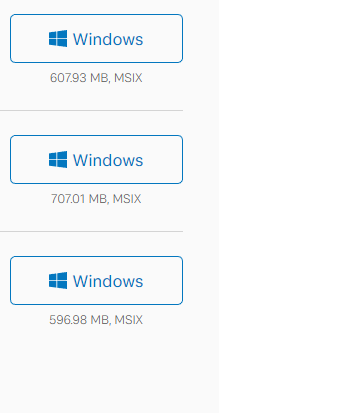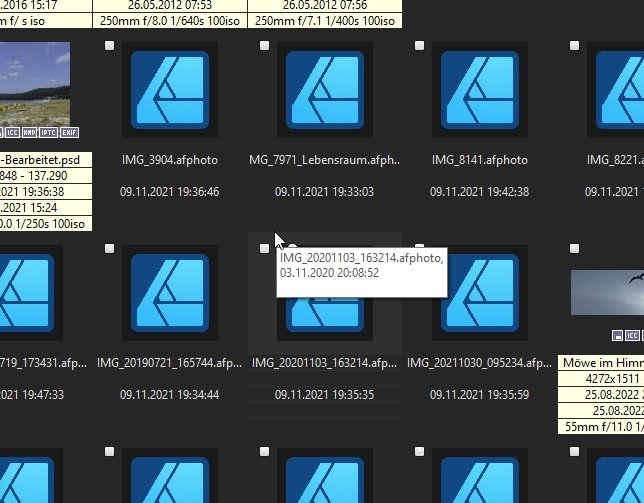
danilo
Members-
Posts
49 -
Joined
-
Last visited
Recent Profile Visitors
The recent visitors block is disabled and is not being shown to other users.
-
Of course: fight for your rights to use software you paid for!
-
 noxi reacted to a post in a topic:
Affinity Suite V2 on Linux [ Wine ]
noxi reacted to a post in a topic:
Affinity Suite V2 on Linux [ Wine ]
-
 Wanesty reacted to a post in a topic:
Affinity Suite V2 on Linux [ Wine ]
Wanesty reacted to a post in a topic:
Affinity Suite V2 on Linux [ Wine ]
-
The whole situation about the lack of support for Linux has made me think. Unfortunately, consumers are too lazy to stand up for their rights, even against companies. But whoever triggers an avalanche must also take responsibility for the victims of that avalanche. Or not? This is where consumer advocates, courts and politicians are called upon to act. This is not specifically about a certain application and its manufacturer, it ultimately applies to all manufacturers of commercial software who are content with commercial operating systems and thus the decision of their customers, due to a certain workflow that is made impossible by the lack of software on free operating systems, so that they are restricted in their freedom to choose an operating system. In my opinion, this is not due to Linux itself, but rather to the manufacturers of the software, who (want to) enforce a requirement for proprietary software by deciding not to publish and maintain a native Linux version. Ultimately, the business considerations are understandable, because Linux developers are far more expensive in terms of personnel costs due to their skills than corresponding developers with their kits in the Mac and Windows area. This ultimately also results in incompatibility with Linux interfaces and makes implementation more difficult. - In my opinion, I generally see a situation that needs to be addressed by consumer advocates to put an end to the situation where manufacturers force their customers to use paid operating systems that may only work with special, more expensive hardware. I also think that citing the open source model as a reason for incompatibility is just an excuse for software manufacturers to forego monetary benefits when purchasing licenses for operating systems for their own company, for example. Ultimately, this is without taking into account the needs of consumers, i.e. the buyers of the software. - Furthermore, coercive and monitoring measures for customers can be better enforced on commercial operating systems than on open source software. It seems that compatibility levels are prevented from being used more difficult in order to also achieve this compulsion to use commercial operating systems. - The reference to open source alternatives as a "replacement" seems cynical, as most users of a particular software know that the learned workflow has to be relearned with a new software, so that a lasting loss of time occurs when learning a new software. Especially since the manufacturers of commercial software do not provide any financial compensation to cushion the bridging time when a productive workflow is not possible. Furthermore, even the best non-commercial open source projects only marginally meet the established industry standard for applications, as they access libraries and resources that are also subject to commercial usage restrictions by purchasing a software, the user would also have access to it under a free operating system. Übersetzungsergebnisse verfügbar
-
 danilo reacted to a post in a topic:
Affinity Suite V2 on Linux [ Wine ]
danilo reacted to a post in a topic:
Affinity Suite V2 on Linux [ Wine ]
-
 danilo reacted to a post in a topic:
Affinity Suite V2 on Linux [ Wine ]
danilo reacted to a post in a topic:
Affinity Suite V2 on Linux [ Wine ]
-
 danilo reacted to a post in a topic:
Affinity Suite V2 on Linux [ Wine ]
danilo reacted to a post in a topic:
Affinity Suite V2 on Linux [ Wine ]
-
 vink3d reacted to a post in a topic:
Please consider Linux as a viable platform - Microsoft is bleeding users to Linux because of their choices.
vink3d reacted to a post in a topic:
Please consider Linux as a viable platform - Microsoft is bleeding users to Linux because of their choices.
-
 gpjo reacted to a post in a topic:
Please consider Linux as a viable platform - Microsoft is bleeding users to Linux because of their choices.
gpjo reacted to a post in a topic:
Please consider Linux as a viable platform - Microsoft is bleeding users to Linux because of their choices.
-
 danilo reacted to a post in a topic:
Please consider Linux as a viable platform - Microsoft is bleeding users to Linux because of their choices.
danilo reacted to a post in a topic:
Please consider Linux as a viable platform - Microsoft is bleeding users to Linux because of their choices.
-
 danilo reacted to a post in a topic:
Please consider Linux as a viable platform - Microsoft is bleeding users to Linux because of their choices.
danilo reacted to a post in a topic:
Please consider Linux as a viable platform - Microsoft is bleeding users to Linux because of their choices.
-
 danilo reacted to a post in a topic:
Table of Content - Page numbering and outlining?
danilo reacted to a post in a topic:
Table of Content - Page numbering and outlining?
-
 danilo reacted to a post in a topic:
Publisher: guides and document stettings
danilo reacted to a post in a topic:
Publisher: guides and document stettings
-
danilo started following All programs reset to default after each update , Publisher: guides and document stettings , Free photo realistic Affinity Photo brushes! and 5 others
-
 danilo reacted to a post in a topic:
Curated list of Free for Commercial Use Fonts
danilo reacted to a post in a topic:
Curated list of Free for Commercial Use Fonts
-
 danilo reacted to a post in a topic:
Affinity Suite V2 on Linux [ Wine ]
danilo reacted to a post in a topic:
Affinity Suite V2 on Linux [ Wine ]
-
 danilo reacted to a post in a topic:
Architecture Magazine 2023
danilo reacted to a post in a topic:
Architecture Magazine 2023
-
Thank You! Very well ...
-
And they will be updated when changed?
-
Hi, it is possible to insert an affinity-photo file as file layer like the workflow in Clip-Studio-Paint?
-
 MikeTO reacted to a post in a topic:
Page numbering is out of order
MikeTO reacted to a post in a topic:
Page numbering is out of order
-
Page numbering is out of order
danilo replied to danilo's topic in Desktop Questions (macOS and Windows)
Thank you! I follow your advice and now it works. Recently, not all chapters were correctly set to take over from the previous chapter. That wasn't clear to me, and I was able to line up the first page by moving it back and forth in the book. -
The first and second parts of my book are not numbered correctly. Multiple attempts to sync the numbering brought no results. Is this a bug by Publisher or why is it happening? I have created all pages correctly (Cover [ ][x] ... ).
-
 Dan C reacted to a post in a topic:
All programs reset to default after each update
Dan C reacted to a post in a topic:
All programs reset to default after each update
-
All programs reset to default after each update
danilo replied to danilo's topic in Desktop Questions (macOS and Windows)
I solve the trouble while I found yesterday the exe-files in my account. -- Now it works properly. -
All programs reset to default after each update
danilo replied to danilo's topic in Desktop Questions (macOS and Windows)
All well and good, but it seems to be a common mistake of Affinity programs to no longer register content that has already been created after an update. I can see the saved old workspaces, but Affinity doesn't show them. Windows 10 is my OS ==> Affinty is the only one Program that makes this trouble ... And this path is not available for myself: Affinity Store (EXE) : Photo - %appdata%\Affinity\Photo\2.0\Settings\ Designer - %appdata%\Affinity\Designer\2.0\Settings\ Publisher - %appdata%\Affinity\Publisher\2.0\Settings\ because there is no exe file -
-
Okay, I will give it a try.
-
No, that's not what I mean. I just mean a program like ACDsee/Magix/Lightroom/Bridge/XNVIEW that also supports afphoto files.



